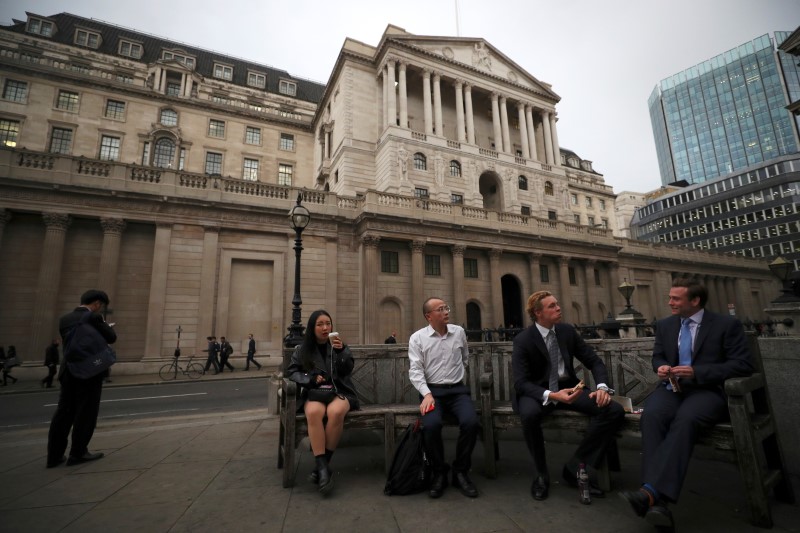By David Milliken
LONDON (Reuters) - The Bank of England has said that the interest rate hike it is likely to make "in the coming months" depends on whether inflation pressures continue to build and the economy moves nearer to growing at full capacity.
Most economists polled by Reuters now expect the central bank to raise rates on Nov. 2, after its next meeting, lifting the official cost of borrowing to 0.5 percent from 0.25 percent, the first increase in more than 10 years.
Below is a summary of what the Bank has said it is expecting to see in the British economy, how the economy has been performing and when the next key data releases are due.
INFLATION
What the Bank said: the central bank, which has a target of 2 percent inflation, said on Sept. 14 that it expects consumer price growth will reach slightly above 3 percent in October before starting to fall slowly.
What has happened: In September the CPI rose to a five-year high of 3.0 percent, up from 2.9 percent in August.
WAGES
What the Bank said: In August the BoE forecast that annual wage growth would be 2.0 percent in the fourth quarter of 2017, rising to 3.0 percent in the same period of 2018.
What has happened: Wage growth during July and August was a bit stronger than the BoE expected at 2.2 percent year-on-year.
A BoE survey has shown companies plan to offer pay deals in the 2-3 percent range, while a separate survey by the Chartered Institute of Personnel and Development gave a lower 2 percent average for the private sector.
ECONOMIC GROWTH
What the Bank said: Preliminary data is likely to show gross domestic product grew by 0.3 percent in the third quarter, the same slow quarterly growth as in the previous three months. But growth might be stronger due to improving consumer demand, it said.
What has happened: Financial data company Markit said its purchasing managers' indices pointed to 0.3 percent third-quarter growth, while the National Institute of Economic and Social Research said official numbers pointed to an expansion of 0.4 percent.
August factory output beat expectations, and private-sector measures of retail sales growth have been solid. But Britain's goods trade deficit hit a record high.
The preliminary official reading for GDP in the third quarter will be published on Oct. 25.
UNEMPLOYMENT
What the Bank said: the central bank forecast in August that unemployment would average 4.4 percent in the last three months of 2017 before rising slightly to 4.5 percent in 2018 and 2019, while labour force participation for over 16s would remain steady at 63.5 percent
What has happened: Unemployment fell faster than forecast, dropping to a 42-year low of 4.3 percent of the workforce in the three months to July and remaining there in August. That is below the 4.5 percent level that the BoE has previously said could be a trigger for higher inflation.
Working-age labour force participation rose to a record-high 75.3 percent in July, before slipping to 75.1 percent in August.
WHAT ARE FINANCIAL MARKETS SAYING?
Sterling rallied strongly in the run-up to and after the Bank's Sept. 14 meeting, when it made its announcement, as investors had not been pricing in an interest rate rise until late 2018. Economists polled by Reuters were even more sceptical - they had expected no rate rise until 2019.
After the BoE announcement, financial markets brought forward their bets on when the rate hike would come and they are now pricing in an 80 percent chance of a hike on Nov. 2.

Sterling peaked on Sept. 20 at $1.3656, its highest since June 2016, but has since come under pressure and is now trading at a similar level to just before the Sept. 14 meeting at around $1.3170. One euro is worth about 89 pence.